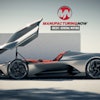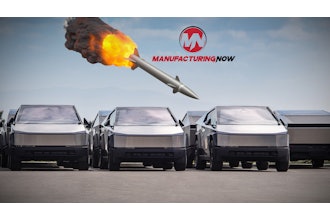On Oct. 6, Kawasaki Heavy Industries conducted the first test flight of the K-RACER, the company's unmanned helicopter.
The K-RACER, which stands for Kawasaki Researching Autonomic Compound to Exceed Rotorcraft, passed its first flight test at the Taiki-cho Multi-Purpose Aviation Park in Hokkaido, Japan.
The demonstrator vehicle is called a compound helicopter because it has a 4-meter main rotor and a pair of wings with propellers on both sides instead of a tail rotor. According to Kawasaki, the left and right propellers counter the torque associated with the main rotor's rotations and generate thrust to move the helicopter forward.
In forward flight, the main wings share lift and reduce the load on the main rotor in order to achieve high-speed flight, which is not possible for conventional helicopters.
The K-RACER was developed by Aerospace Systems Company, a division of Kawasaki, which worked with the motorcycle and engine side of the business, as well as the corporate technology division, to use the same engine as Kawasaki's Ninja H2R motorcycle.
The Kawasaki Ninja H2R is a limited-release, closed-course production motorcycle that starts around $55,000.
In the demonstration, the company wanted to prove that high speeds and stable flight were possible under autonomous control.
Next, the company will take what it learned from this test and use it to develop vertical-take-off-and-landing vehicles, as well as manned and unmanned helicopters.






















